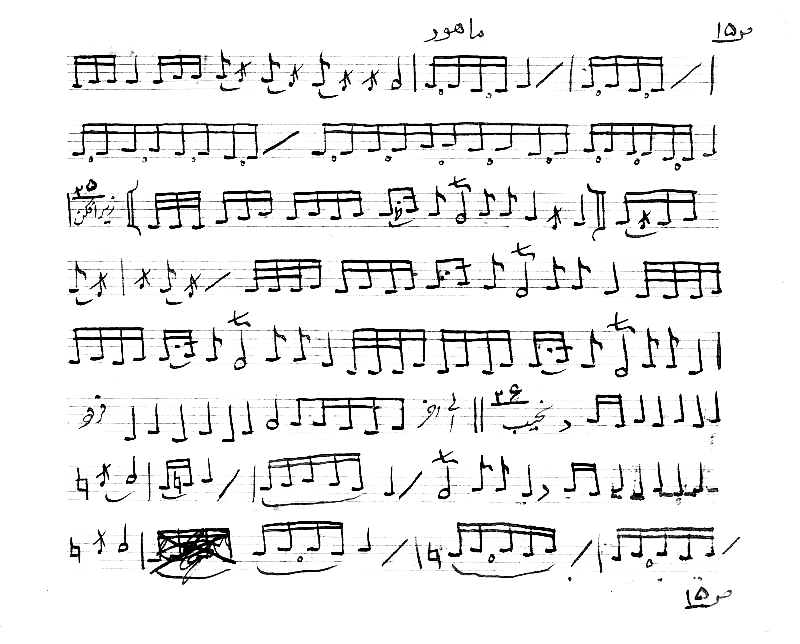TheRepertoireof Ostad Elahi
Ostad Elahi’s recordings, which consist of some 40 hours, are but a small representation of the vast repertoire he developed over a lifetime.



The recordings we have at our disposal contain over 100 types of musical pieces, without breaking each of these long pieces into their smaller constituent parts. These recordings are organized into maqāms (modal melodies) and dastgāhs (systems or suites linking sequences of maqāms, melodic types, or melodies that exhibit formal affinities). Beyond the maqām pieces, there are also dance airs and a hundred or so melodies and refrains (sacred hymns; sarband or zekr), which are generally quite short and not susceptible to variations. These two types of pieces are integrated into the larger suites or dastgāhs.
This repertoire is merely an a posteriori classification whose goal is to provide landmarks to the listener and facilitate the approach to this unique music. Two musical pieces with the same title may take different forms and meanings depending on the spiritual scene and occasion that inspired them. It could be said that Ostad’s repertoire merely serves as the basis for his unlimited improvisations.
This section provides users with a clear overview and audio clips from Ostad Elahi’s published recordings to date, categorized into suites, mystical airs, dances and hymns. Certain pieces appear on multiple tracks and albums, but due to the highly improvisational nature of Ostad’s music, they are rendered differently each time. All of the hymns (zekrs) and their translations are listed in alphabetical order and cross-referenced to other albums featuring improvisations of the same melodies. Users can thus familiarize themselves with Ostad’s repertoire in a simplified and systematic fashion in order to experience firsthand the technical virtuosity and profound impact of his music.
Although nearly half of the 40 hours of recorded music is of such poor recording quality that it is practically unusable, it is nonetheless sufficient to appreciate the uniqueness of Ostad’s musical work and to acquire a sense of what was discretely accomplished over the course of a lifetime. This work bears witness to the creation of a true musical revolution: the transformation of the tanbur’s repertoire into a learned art form. Ostad's innovations have virtually transfigured the musical traditions in which it is rooted, giving rise to uncharted sonorities deriving solely from the original and methodical genius of their creator.
The music of Ostad Elahi has a unique structure that does not fit the mold of that which is taught in musical academies. This music cannot be placed into any typical categories: it is at once traditional yet profoundly innovative; it is completely spiritual yet cannot be described solely as secular, for it includes non-sacred elements; and it is mystical yet unbound by specific ritual, for Ostad would generally play only for himself or in small gatherings of relatives and close friends.
Ostad’s musical art endures in the person of Dr. Shāhrokh Elahi, his youngest son and the grandmaster of the tanbur, who has been instrumental in the systematic classification and publication of Ostad’s music. Recent technological innovations have enabled the restoration of many of Ostad’s recordings, allowing an ever-expanding public to access and discover the multiple facets of his singular art of the tanbur.
